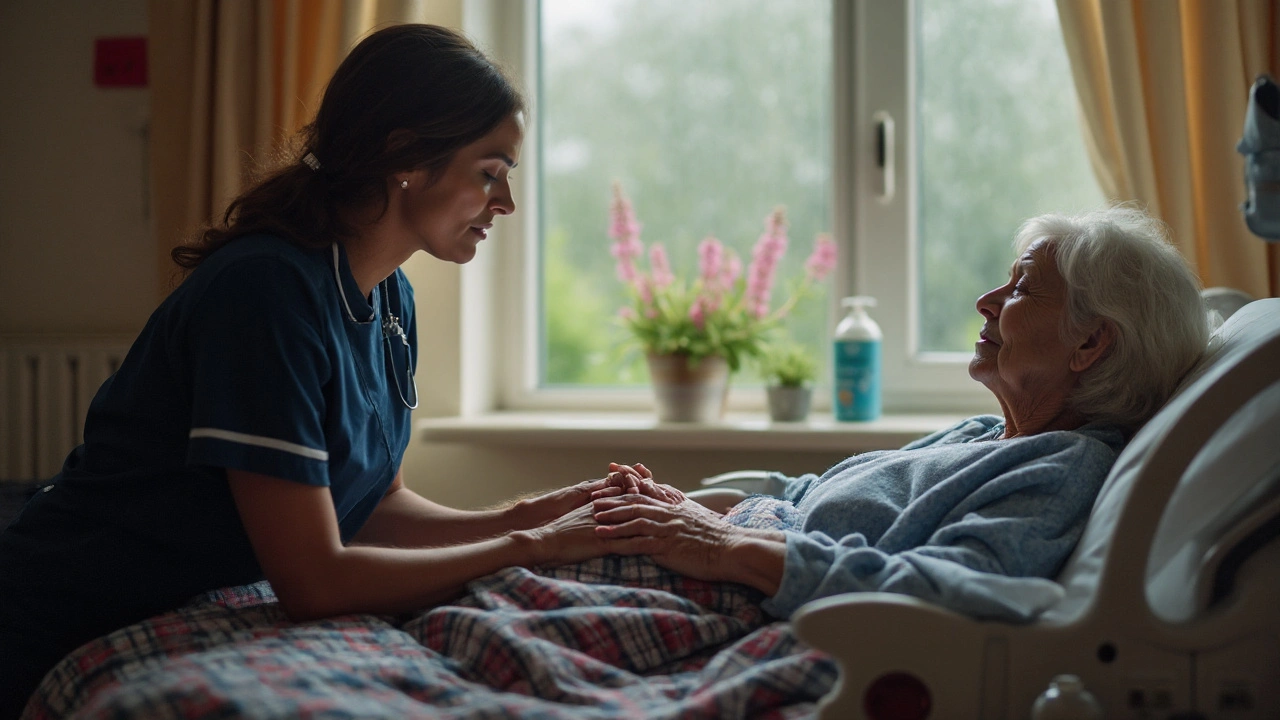End-of-Life Comfort: Simple Ways to Bring Peace and Relief
Facing the final chapter can feel overwhelming, but a few thoughtful touches can turn a stressful moment into a calm one. Most people think comfort means big gestures, yet the smallest changes—like a soft hand on the back or a warm blanket—often make the biggest difference. Below you’ll find easy, practical ideas you can start using today, whether you’re at home, in a hospice, or caring for a loved one.
Why Gentle Touch Matters
Touch isn’t just a feeling; it’s a signal that tells the brain it’s safe. Studies show that light massage or even a caring hand‑hold can lower heart rate, reduce pain, and lift mood. In the end‑of‑life setting, a gentle stroke can cut through anxiety and help the person focus on the present instead of fear. You don’t need a professional therapist to start—just a calm, steady rhythm and a quiet voice can be enough.
For example, a simple palm‑press along the forearm for a minute can release tension without causing discomfort. If the person enjoys warm sensations, a warm compress on the shoulders can ease stiff muscles and create a soothing heat that spreads throughout the body. The key is to keep the pressure light and the movement slow, letting the person dictate the pace.
Practical Comfort Techniques
1. Layered Softness: Use breathable fabrics, a plush throw, and a supportive pillow to create a nest‑like environment. Soft textures calm the nervous system and make it easier to rest.
2. Personalized Aromas: A few drops of lavender or chamomile in a diffuser can lower stress levels. Test the scent first; some people may be sensitive, so keep the scent faint.
3. Soundscapes: Play gentle music, nature sounds, or a favorite radio program at low volume. Consistent, low‑level sound masks hospital noise and helps the mind settle.
4. Hydration and Nutrition: Small sips of warm tea or clear broth can soothe the throat and provide comfort without overwhelming the digestive system. Offer favorite flavors, but respect any appetite changes.
5. Meaningful Conversation: Ask open‑ended questions about cherished memories. Listening without trying to fix anything validates emotions and reinforces connection.
6. Adjust Lighting: Dim lights or a bedside lamp with a warm hue reduces glare and encourages a relaxed atmosphere. Natural light during the day helps regulate sleep cycles.
When you combine these touches—soft fabrics, calming scents, gentle sounds, and caring words—you build a holistic support system that respects both body and spirit. Remember, the goal isn’t to eliminate all discomfort (which is often impossible) but to create moments of ease that feel like a breath of fresh air amidst the difficulty.
Lastly, trust your instincts. If a technique feels right and the person responds positively, keep it in the routine. If something feels off, adjust quickly. Comfort is personal, and the best guide is the person you’re caring for.
By applying these simple strategies, you can turn the end‑of‑life phase into a time of dignity, warmth, and genuine peace.

How Palliative Massage Transforms Hospice Care: Benefits, Techniques, and Safety
Discover how gentle touch reduces pain, anxiety, and restlessness in hospice. Evidence-backed steps, safety rules, and caregiver-friendly techniques that truly help.
Categories
- Health and Wellness (148)
- Alternative Therapies (84)
- Massage Therapy (40)
- Travel and Culture (15)
- Beauty and Skincare (9)
- Holistic Health (8)
- Health and Fitness (5)
- Spirituality (5)
- Other (2)
- Personal Development (2)
Popular Articles



